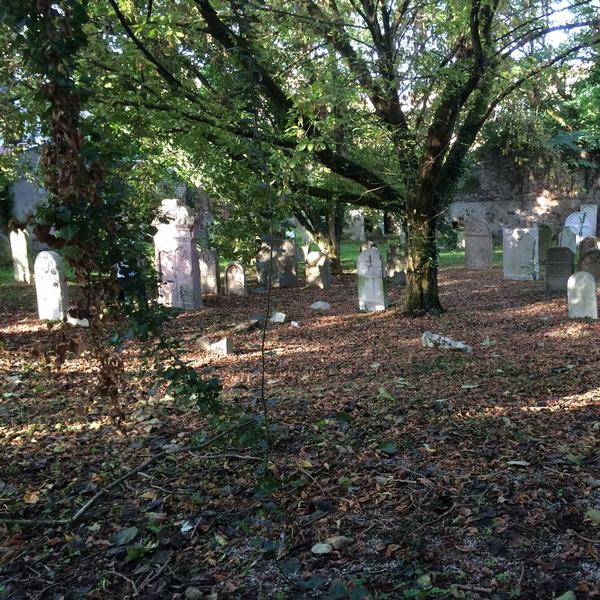
The most ancient Jewish cemetery remaining in Padua is located in via Wiel. It was used from the 16th until the 18th century and it is located outside the Medieval city walls, but protected by 16th century bastions. It was enlarged in 1653 thanks to Salomone Marini, rabbi of the “Università degli ebrei Portoghesi di Padova” (“University of Portuguese Jews in Padua”). The cemetery hosts, among many burials, the tomb of Meir Katzenellenbogen. He was born in Prague in 1473 and died in Padua in 1585. He is the author of the “Responsa”, in which he explains the role of the rabbis of his age as Doctors of the Law rather than intermediaries between the Faithful and God. Rav Meir’s and his son Samuel’s (a talmudic rabbi himself) tombs, are visited by people from all over the world as shown by the small stones put on the tombstone.
Another famous tombstone is the one of Abram Catalan, a doctor from Padua; during the 1630-31 plague epidemic he was commissioned, with three other Jewish doctors, to watch life conditions in the Ghetto, taking the necessary measures to contain the contagion. In that period 722 people lived inside the ghetto of Padua: 634 of them were affected by the plague and 421 died. Those dead were probably buried in mass graves as no evidence has been found inside the cemetery.
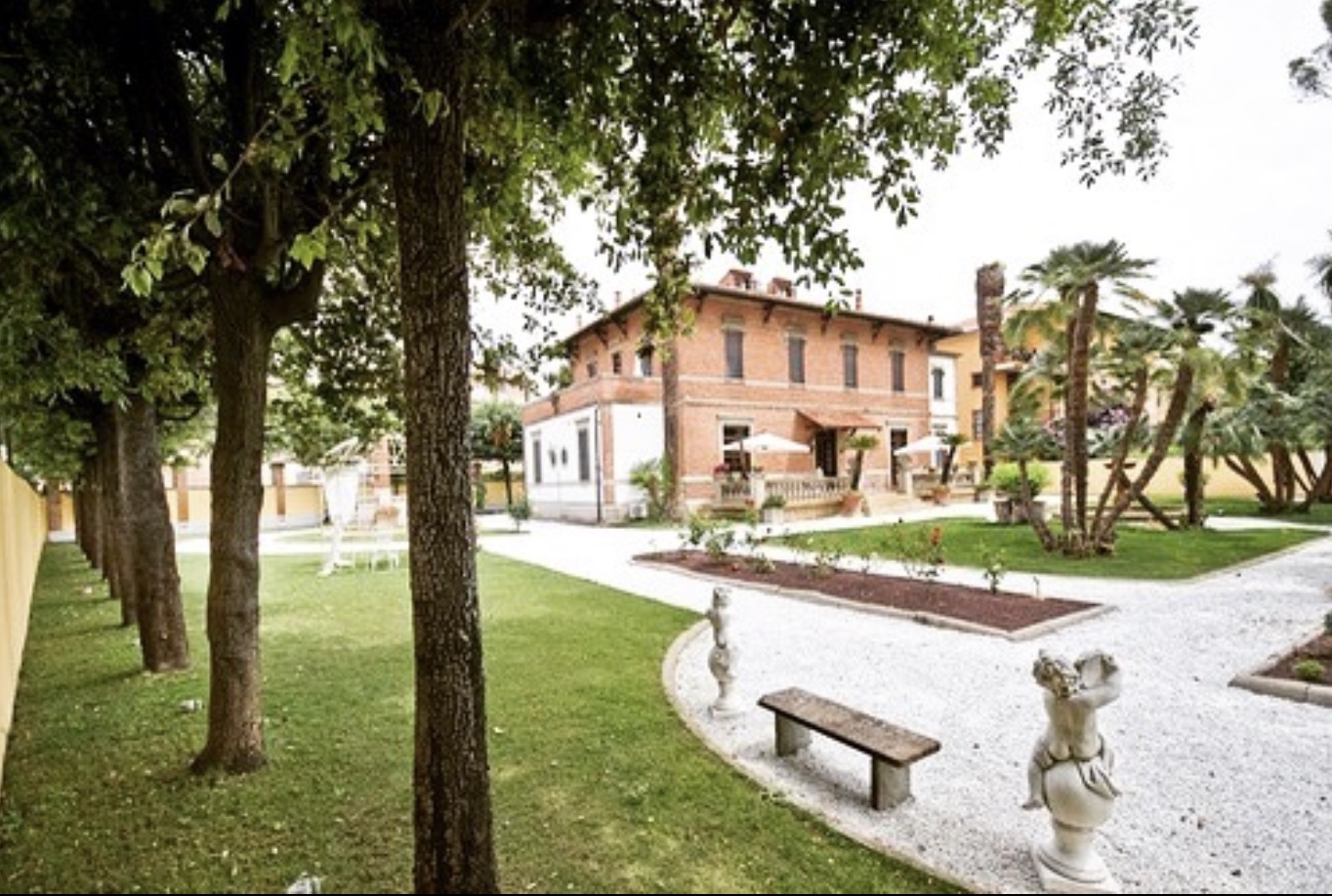
A few steps from the renowned Piazza dei Miracoli with its famous Leaning Tower, The Rif – Boutique Hotel is set in an early 20th century villa surrounded by its magnificent garden, which offers an intimate and luxurious setting for a stay devoted to elegance and relaxation.
This is not just a hotel, but a place where you can constantly immerse yourself in art. You will be amazed by the liberty frescoes, statues and historical design elements that characterize both the interiors and the exteriors, with modern design combinations. Temporary and impromptu exhibitions will accompany you during your stay. An abundant buffet breakfast will be served in the characteristic “Sala delle Stampe”, where you can start your day before immersing yourself in the historical beauties of Pisa.
Elegant harmonies for a five-star welcome, in a continuous flow of elements from the past that combine well with refined and modern design, accompanied by a friendly and qualified staff, an authentic expression of Italian hospitality in Tuscany.
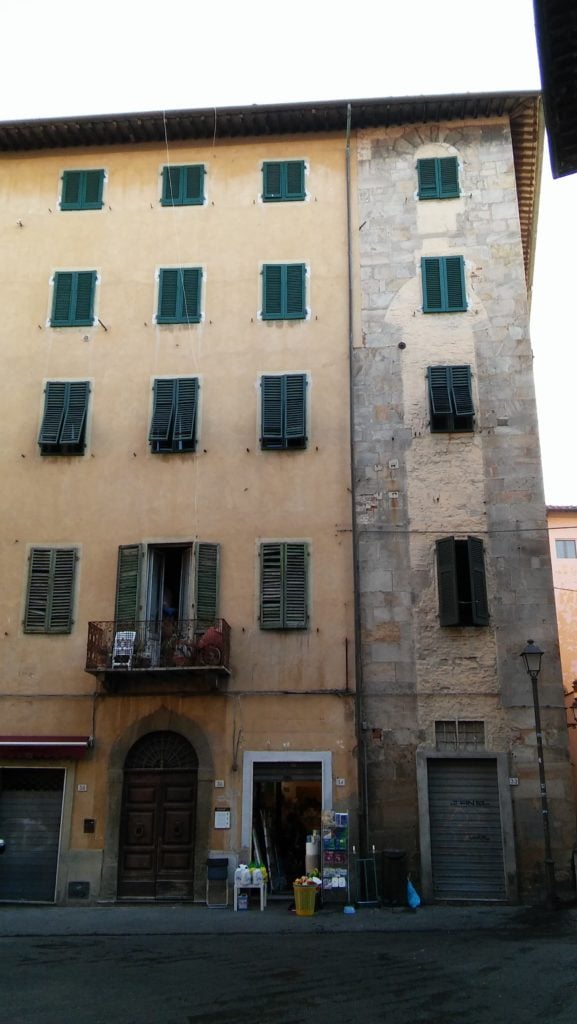
There is evidence of a synagogue in the house at 36, via Cavalca, dating back to the early fifteenth century. As in most cases at the time, the synagogue was rented or purchased by the Community’s notables, and annexed to their house. The building on Via Cavalca was the da Pisa family’s residence, bankers who had held the monopoly of money lending for almost a century, following the Florentine government’s decision to group all the lenders into one institution.
In the course of its history, the Jewish community concentrated in a one area or another of the city. Towards the end of the thirteenth century there are references to an area near Piazza dei Cavalieri, known as “chiasso dei Giudei”. In the early fifteenth century the Jews concentrated in the Via Cavalca area, and in the late sixteenth century with the arrival of the Levantine merchants, in the opposite bank of the River Arno and settled in the Palazzo da Scorno (Via da Scorno / Lungarno Galilei). Finally, a few years later, the Community acquired its current premises in Via Palestro, which it rented in 1595 and purchased in 1647.
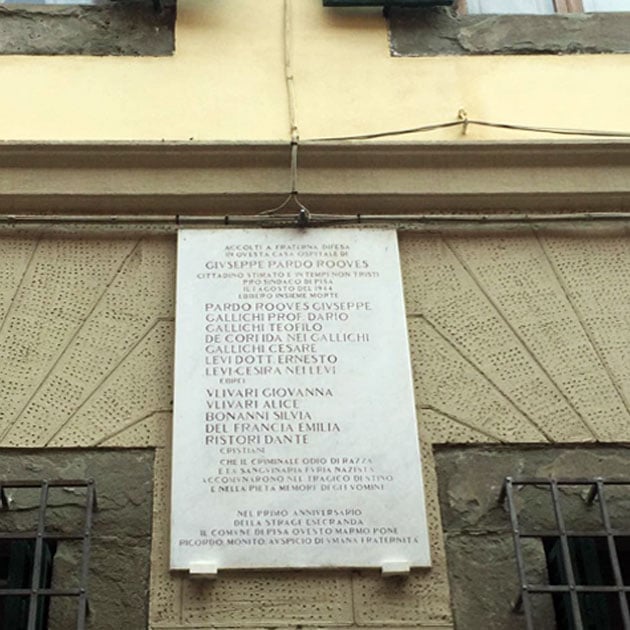
Abramo Giuseppe Pardo Roques (1875 – 1944) was President of Pisa’s Jewish Community from 1907 to 1910 and again from the early 1920s until his tragic death in 1944. On the morning of August 1st, a squad of German soldiers burst into his house in Via Sant’Andrea. Having seized all the valuables, they slaughtered Giuseppe Pardo along with eleven other people in the house: six other Jews who had sought refuge, three servants and two neighbours. Given that the break-in was made to look like a robbery, there is reason to suspect that an informer had collaborated, someone who knew that Pardo was Jewish maybe a neighbour who had recently moved and was known to be friendly with German soldiers.
Giuseppe Pardo Roques was a prominent, well-respected figure in the city of Pisa. He came from a Sephardic family that had arrived in Livorno in the late nineteenth century; he had been deputy mayor of Pisa and his name had been associated with philanthropic activities in the city. A commemorative plaque can be seen on the façade.
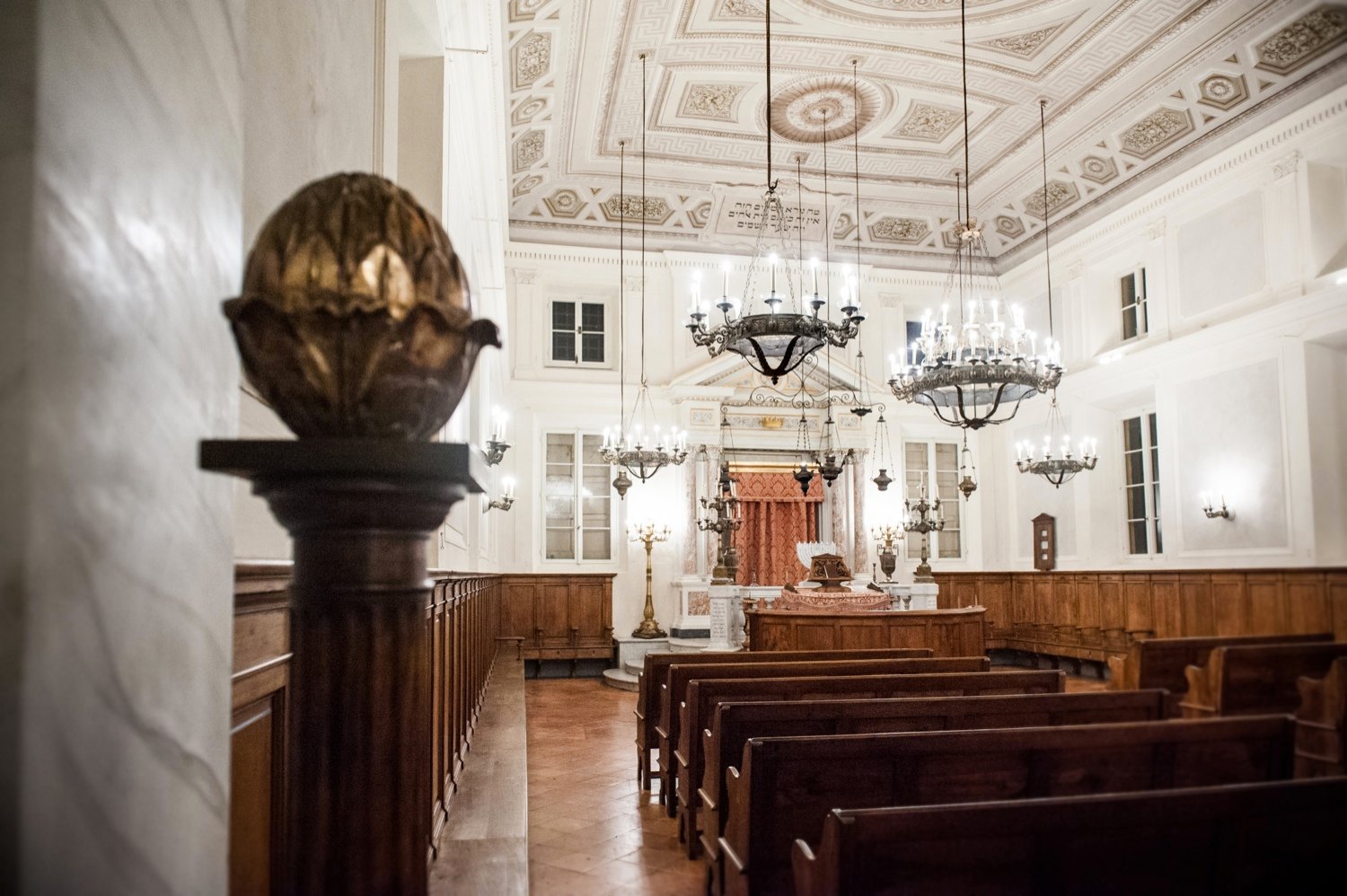
Documents show that Pisa’s synagogue has occupied the same building since the end of the sixteenth century. Initially rented, the complex was purchased in 1647 and first renovated in 1785. In 1861-65 it was renovated again, to a project by the architect Marco Treves. Treves was a Jew from Vercelli working in Tuscany at the time, where he designed some major works for his Jewish clientele. The façade was redesigned, and is simple albeit echoing classical forms. The main hall of the synagogue on the first floor was raised, and Treves added both a second order of windows, and the large pavilion vault adorned with sober neoclassical decorations. The furnishings were rearranged according to layout that had become popular during the Emancipation, inspired by Roman Catholic churches: the tevah, enclosed by a semi-circular balustrade in walnut wood was placed next to the area of the Aron ha-Kodesh, creating a single focal point, like church cancels. The central space was entirely occupied by pews, in two sectors of parallel rows facing the Aron and the women’s gallery was on the opposite side, above the entrance.
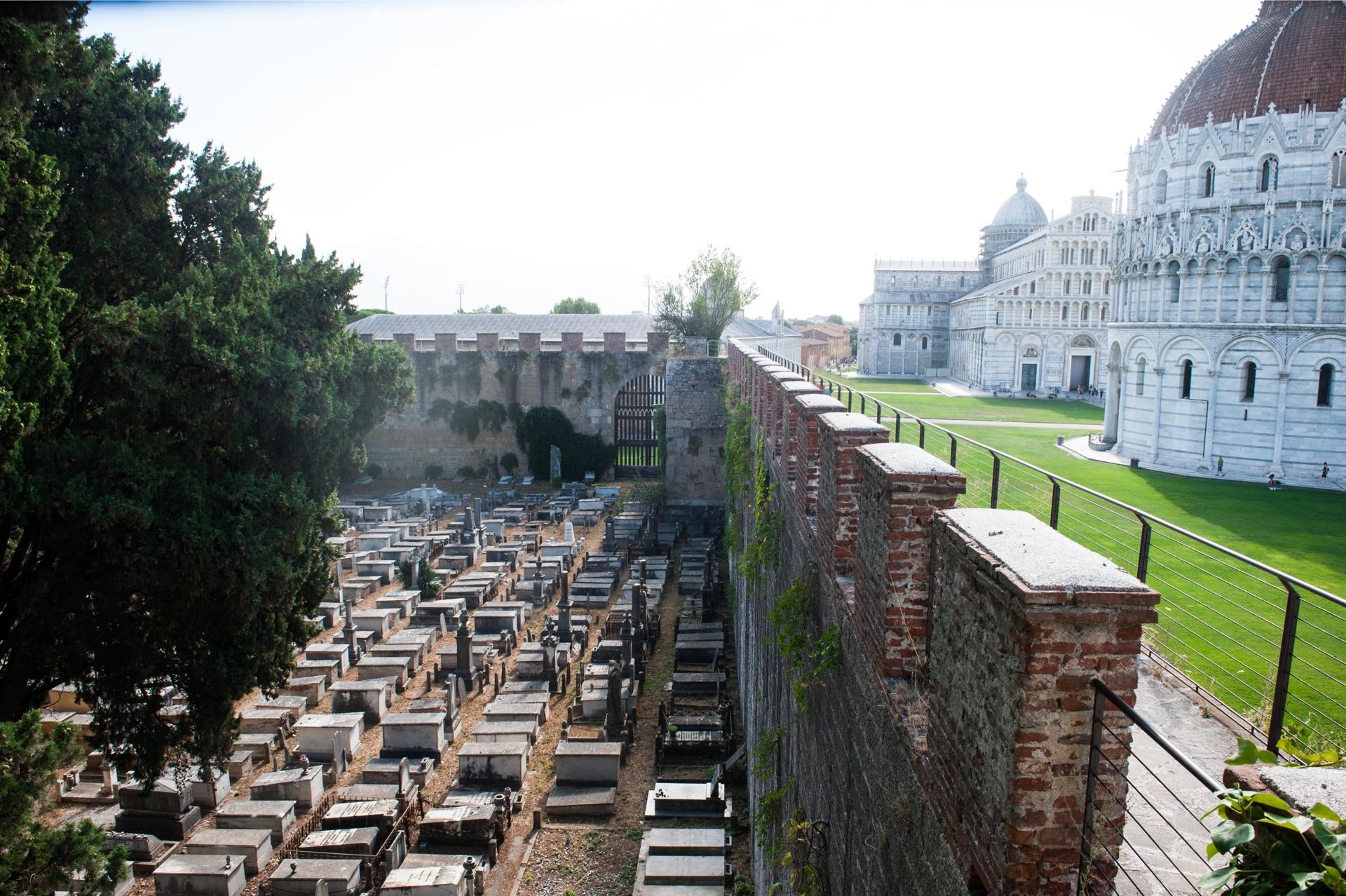
The Jewish cemetery of Pisa is located in an attractive position just outside the section of city walls surrounding Piazza dei Miracoli, which is why in the twentieth century numerous Jews from other cities wanted to be buried here. It is one of the oldest preserved Jewish cemeteries still in use. It was purchased in 1674, and followed three previous burial grounds in the history of the Jewish community in Pisa. The oldest one dates back to the thirteenth century and was next to the Porta Nuova (New Gate) where epigraphs have been found carved into the city walls. A second one, listed in 1330 and perhaps used until the sixteenth century, was further south, on land belonging to the da Pisa family. The third, mentioned in surveys from 1618 and 1622, was also along the western walls, to the left of Porta Nuova. It seems to have remained in use for a short period until 1674, when the Grand Duke Ferdinando II requested the land for another purpose and offered the area of the current cemetery in exchange.
The cemetery houses tombs from every period, most of them single graves. The oldest ones were simple consistently with the Jewish tradition, often belong to Jews of Iberian origins, descended from Spanish and Portuguese exiles who had been expelled from their countries in the late fifteenth century and welcomed a century later by the Grand Duke Ferdinando I with his so-called “Livornina” letters of invitation. In the late nineteenth century, when there was a tendency to assimilate with the dominant culture’s customs, elaborate monumental tombs in the popular styles of the time became more common.
A plaque on the wall of the hall of rituals commemorates the Jews who were deported and killed in the Nazi death camps, along with the victims of the Casa Pardo Roques massacre.
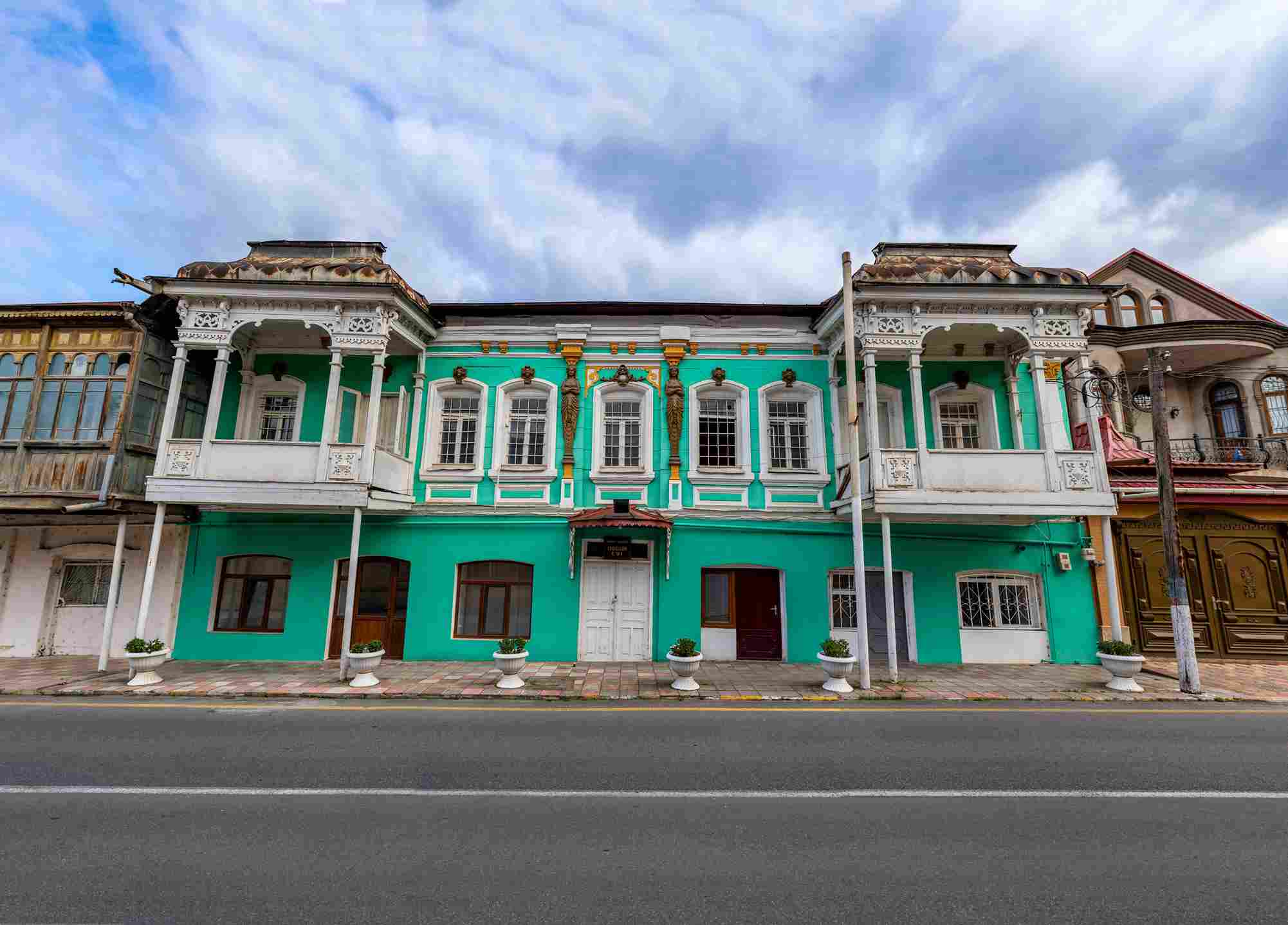
From the main street, one of Red Village’s most
spectacular and unique structures may be spotted. Despite its remarkable
coloring, the building organically blends into the architectural and historical
character of the settlement. The structure was built in the second half of the
nineteenth century and was designated as a historical monument of local
significance. The murals on the front portraying children, as well as the
simple plaque over the door, reveal that this historical building was formerly
a maternity hospital. According to stories of locals, the building formerly
belonged to a wealthy Jewish businessman who, despite never having children of
his own, covered it with murals of happy children’s faces.
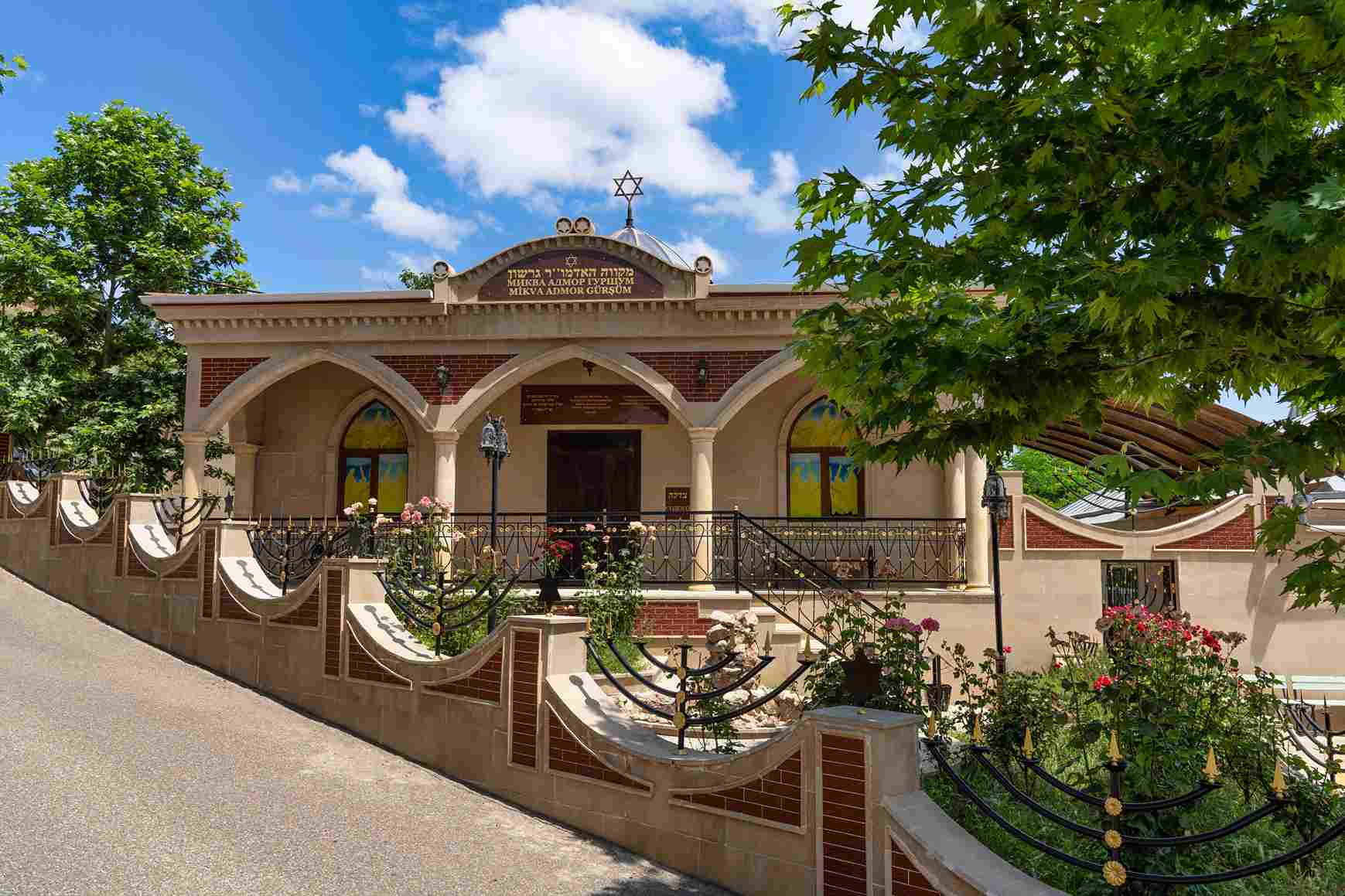
Telman Benyaminov initiated the construction of
both Mikvehs in 2013. The mikve for women was erected in honor and memory of
his mother, Shushan Bat Mardahay.
The mikvah construction incorporates an ablutions
pool, as required in Judaism. Mikvah is now practiced not just for family
purity, but also for the initiation of male and female proselytes into Judaism.
A woman must bath in the mikvah at the end of her monthly menstrual cycle in
order to maintain marital purity. As a result, the mikvah, more than the
synagogue, is considered as the grounds of Jewish family life. Only “living” water – that is,
water of natural origin – can deliver spiritual purification. As a result, a
mikvah is built to seem like natural water.
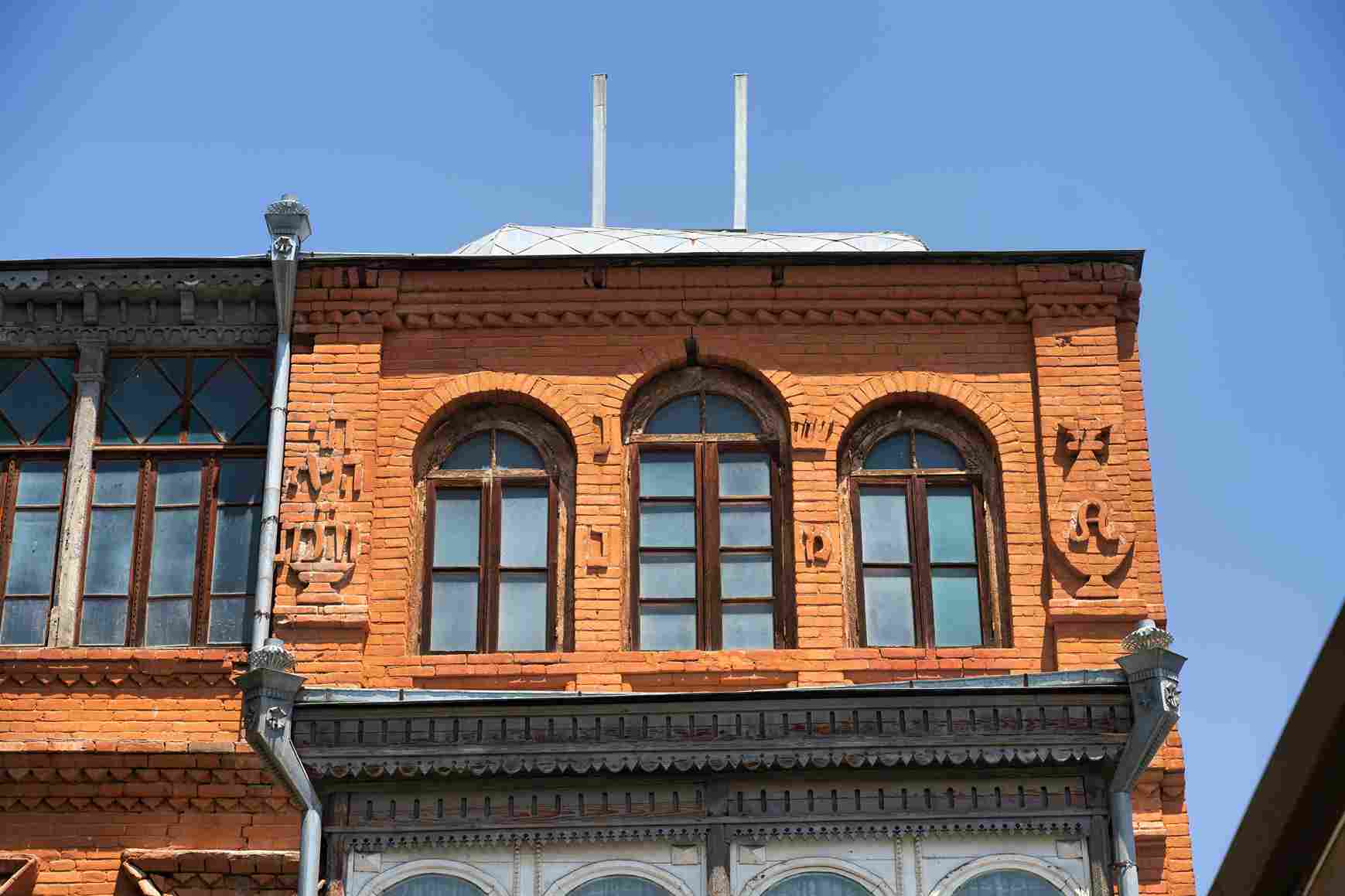
Trade was the primary occupation of Red Village residents at the turn
of the twentieth century. Some were highly successful, with shops not just in
Red Village, but also in Guba and Khachmaz. Among them was the Agababayev
family, who traded carpets.
The Agababyevs were among the first family to settle themselves in Red
Village’s Gileki district. Several generations later, the brothers Ikhiil,
Asaf, and Nuvakh became carpet experts, Guba being one of Azerbaijan’s key
carpet hubs. Asaf worked his way up through the carpet trade, traveling Turkey
and Iran. The Agababayevs’ residences had running water and electricity,
which was exceptional at the time. They also owned a large garden on the
outskirts of town.
Unfortunately, the building is currently sealed, but the magnificent
architectural elements of the front facade may be observed from the little yard
in front of the house.
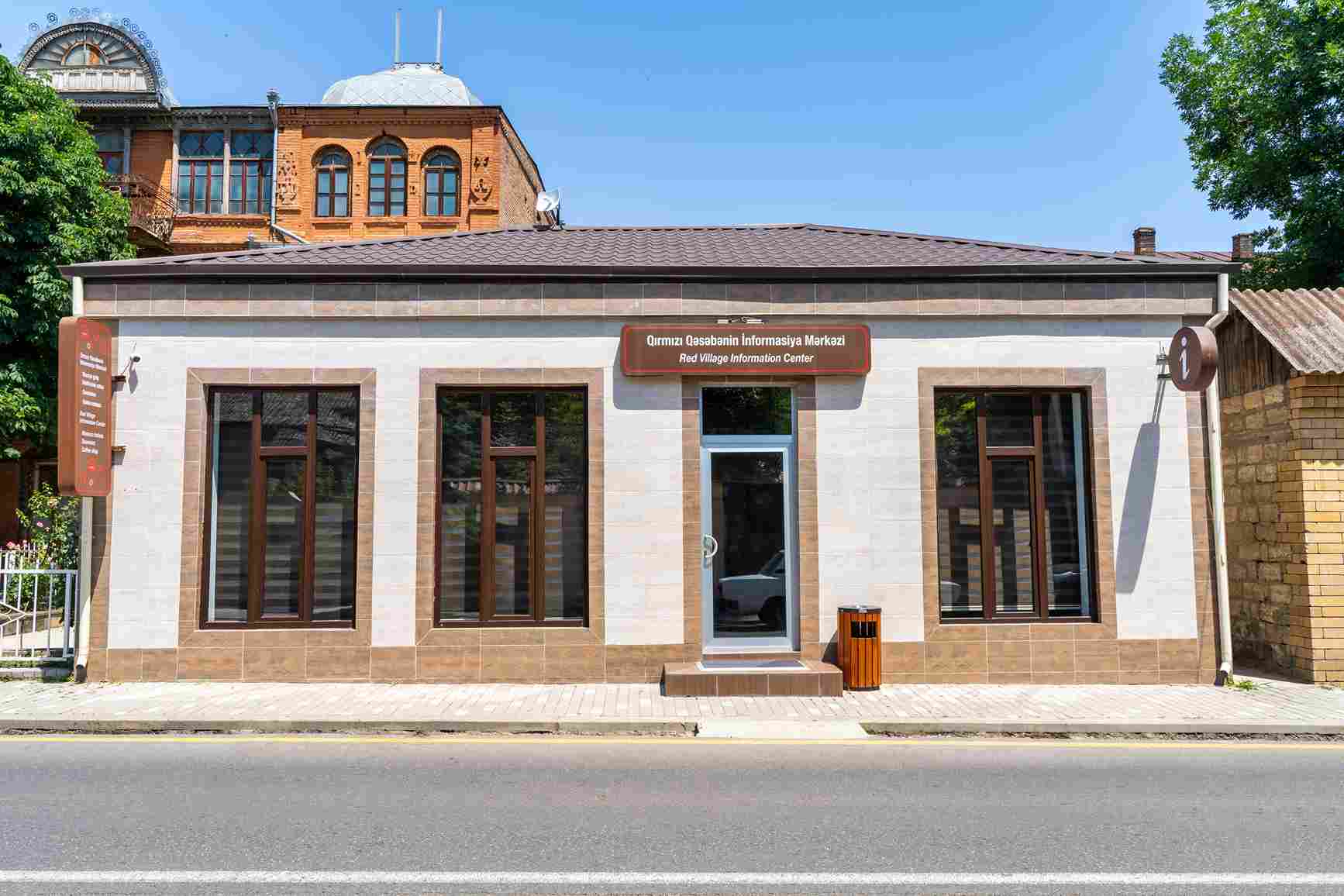
The Red Settlement
Tourism Information Center provides comprehensive information on the
settlement, including history and facts, the Jewish people of Azerbaijan,
places to visit, and so much more. Souvenirs, Mountain Jews cuisine books, kippahs,
postcards, tiny carpets, and kosher jam varieties are available here.
Visitors may also get
cool and hot drinks, as well as snacks, from the center’s little barista
station.











